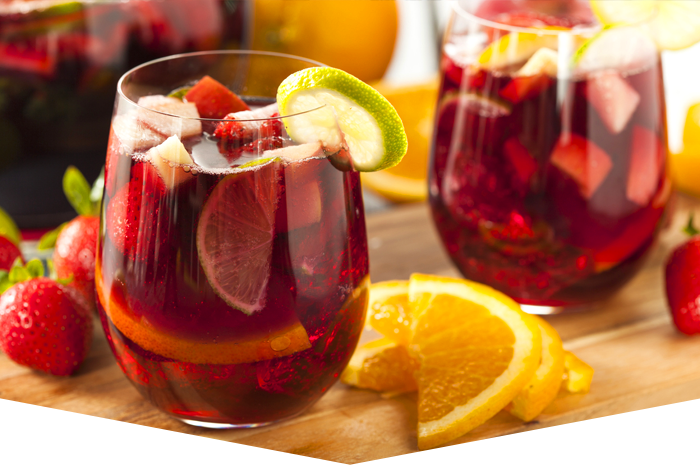
Mallorcan Wines & Drinks
Mallorca is filled with culture and history, particularly when it comes to the local wines and popular drinks that they are proud to offer. From a great range of teas and coffees to the ultimate collection of wines and other spanish drinks, discover some of their most favoured drinks.
Tea & Coffee
Té - Tea
Café con leche - Full cup of white coffee (a café topped up with hot milk)
con leche fria/caliente with milk cold/hot…
Americano - Full cup of black coffee
Descafeinado de maquina - Decaffeinated coffee served from the coffee machine
Chocolate caliente - Hot chocolate
Café irlandes / calypso - Irish / Tia Maria coffee
Café - Small strong 'shot' of black coffee
Un corto de café - Full cup of white coffee (not as strong as a café con leche)
Cortado - Small cup of strong white coffee
Descafeinado de sobre - Decaffeinated coffee served as a sachet of coffee with a small jug of hot milk - for mixing yourself
Carajillo - A café topped up with a shot of brandy
Mallorcan Wine
Wine production has flourished in the Balearics since classical times. In the 19th century sweet Malvasia, wine similar to Madeira, was exported in great quantities until the vineyards were devastated by the Phylloxera louse which changed the course of European wine history in the 1870s. Following this period Mallorcan wines were not taken seriously until very recently. In the last few years, however, a concerted attempt has been made to raise the standards of Mallorca winemaking, driven on one side by the tourist industry and the other by the realisation amongst local producers that the way forward lay in exporting wine that matched international standards. This meant new methods and equipment…
Methods of Ageing
Vino corriente - In Spain, young wine (vino corriente) is the order of the day. These are wines sold in the first or second year after harvesting. These wines have not been aged in wooden casks and are therefore termed sin crianza.
Gran reserva
These wines, on the other hand, have been matured for at least six years and are of a very good quality.
Binissalem
Mallorca’s leading wine is from around the eponymous village, north east of Palma. Following vigorous local campaigning, it was justifiably awarded its denomination de origen (DO) credentials in 1991. Binissalem’s festival of the grape harvest, Festa Vermar, takes place during the week leading up to the last Sunday of September. Red Binissalem is a robust and aromatic wine made predominantly of the local Montenegro grape. It is not unlike Rioja but has a distinctly local character. The local brand is under the name of José L. Ferrer.
Visitors are welcome to visit the bodega (wine cellars) by previous appointment Tel. 971 51 10 50 tel no 100 100 CHECK or visit www.vinosferrer.com
Other Local Wines
A Selection Of Good Spanish & Table Wines
Rioja
Produced in the Ebro Valley of northern Spain – the medium red variety is the most celebrated. Most Riojas are oak cask matured, but some are matured in the bottle, leading to a very high quality. The names to look for in red Rioja include Martinez-Bujanda, Tondonia and Monte Real.
Penedes
North east Spain is the region famed for its white wines, matured in a bottle like French wines. This results in wines which are fruity and dry. The names to look for are Torres, Masia Bach and the Ribera del Duero.
Valdepeñas
This is a small area in central Spain, and produces good quality wine kept in tinajas – small wine jars. Try Aloques which is a strong, light red wine made from a blend of both white and red grapes.





